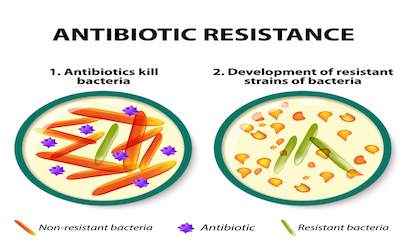 The U.S. Food and Drug Administration’s annual report summarizing sales and distribution data for antimicrobial drugs approved for use in food-producing animals is out.
The U.S. Food and Drug Administration’s annual report summarizing sales and distribution data for antimicrobial drugs approved for use in food-producing animals is out.
The report shows that sales and distribution of all antimicrobials increased 1 percent from 2014 through 2015, tying for the lowest annual increase since 2009. The percentage of those antimicrobials that are considered medically important in human medicine increased by 2 percent from 2014 through 2015.
Antimicrobials include antibiotics and other drugs. Use of antibiotics in food-producing animals is of interest to FDA and public health officials because of the increasing incidence of antibiotic-resistant infections in people.
Each year in the United States, at least 2 million people become infected with bacteria that are resistant to antibiotics and at least 23,000 people die each year as a direct result of these infections, according to the Centers for Disease Control and Prevention. The agency says many more people die from other conditions that were complicated by an antibiotic-resistant infection.
Section 105 of the Animal Drug User Fee Amendments of 2008 (ADUFA 105) requires antimicrobial drug sponsors to report to FDA on an annual basis the amount of antimicrobial drugs they sell or distribute for use in food-producing animals.
This sales and distribution information does not necessarily represent actual use of the products. For example, drug products entering the market may not necessarily be distributed all the way to the farm; veterinarians and animal producers may purchase drugs in anticipation of using them but never actually administer them to animals, or they may administer them in later years.
The FDA is working with federal, academic and industry partners to obtain more information about how, when and why animal producers and veterinarians use those classes of antimicrobial drugs that are important to human medicine.
ADUFA 105 also requires the FDA to issue annual summary reports of sales and distribution data collected from sponsors each year, by antimicrobial class for classes represented by three or more distinct sponsors, and to provide those summaries to the public.
In May 2016, the agency issued a final rule revising its annual reporting requirements for drug sponsors of antimicrobials sold or distributed for use in food-producing animals in order to obtain estimates of sales broken out by the major food-producing species of cattle, swine, chickens and turkeys. This breakdown by species will not appear in the FDA’s annual summary reports until the report covering calendar year 2016. The final rule includes a provision requiring the FDA to publish the annual summary report for each calendar year by Dec. 31 of the following year.
The FDA’s Guidance for Industry #213, which pertains to medically important antimicrobials used in the feed or water of food-producing animals, established a target date of Dec. 31, 2016, for drug sponsors to voluntarily make changes to affected products to remove production indications (growth promotion and feed efficiency) and move the products from over-the-counter availability to veterinary feed directive or prescription status.
Once these changes are made, use of these products for production indications will be illegal and the remaining therapeutic uses for the treatment, control, or prevention of a specifically identified disease will be limited to use under veterinary oversight. Given that GFI #213 is not expected to be fully implemented until the end of 2016, it is premature to expect to see consequential data shifts in the 2015 annual report.
For more information, please see the 2015 Summary Report on Antimicrobials Sold or Distributed for Use in Food-Producing Animals.

2 kg = kilogram of active ingredient. Antimicrobials which were reported in International Units (IU) (e.g., Penicillins) were converted to kg. Antimicrobial class includes drugs of different molecular weights, with some drugs reported in different salt forms.
3 Guidance for Industry #213 states that all antimicrobial drugs and their associated classes listed in Appendix A of FDA’s Guidance for Industry #152 are considered “medically important” in human medical therapy.
4 Not Currently Medically Important refers to any antimicrobial class not currently listed in Appendix A of FDA’s Guidance for Industry #152.
5 NIR = Not Independently Reported. Antimicrobial classes for which there were fewer than three distinct sponsors actively marketing products domestically are not independently reported. These classes include the following: Amphenicols, Diaminopyrimidines, Fluoroquinolones, Polymyxins (excluding 2012 and 2013), and Streptogramins.
6 NIR = Not Independently Reported. Antimicrobial classes for which there were fewer than three distinct sponsors are not independently reported. These classes include the following: Aminocoumarins, Glycolipids, Pleuromutilins, Polypeptides, and Quinoxalines.
(To sign up for a free subscription to Food Safety News, click here.)
